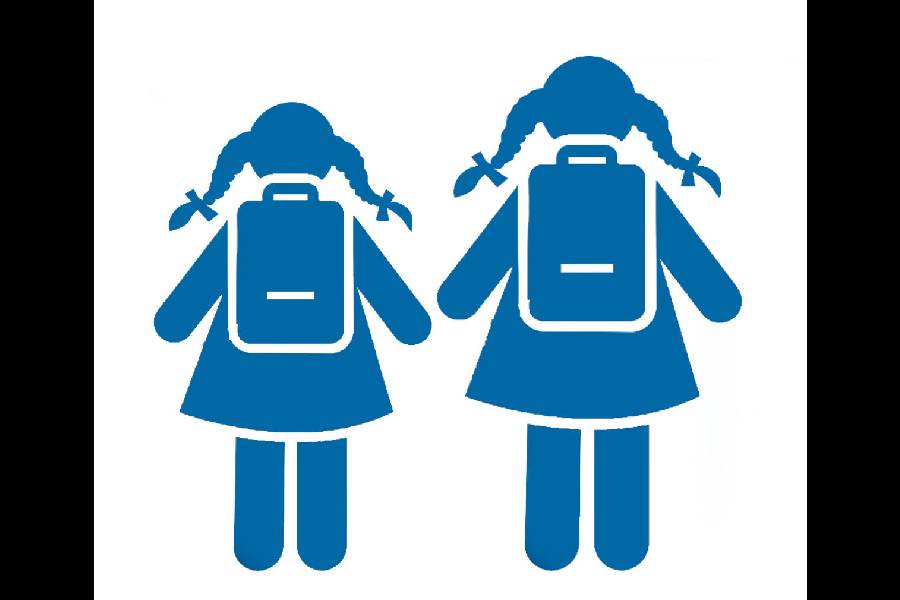The gender gap may be closing in various sectors in the country, but broad official numbers alone may not indicate adequate development for women.
Education, female labour force participation, women’s economic participation and safety concerns are some areas in which women are far from doing very well, despite good general scores.
Nikita Majumdar on Ideas for India, an economics and policy portal on development in India, points at the flip side of the reduction of gender gaps in an article with findings from several studies in each area.
Education
The Annual Status of Education Report (Rural) (ASER) 2023, published by the Centre in January this year, shows a remarkable rise in female enrolment in India’s 14-18 age group when dropouts occur most. ASER 2017 had found that 16 per cent of girls in the 14-18 age group were not attending school compared with 11.9 per cent boys. This year’s report says that the gender gap in this age group has come down to 0.2 per cent.
Majumdar cites a 2023 study by Anand Kumar and Soham Sahoo, both from IIM Bangalore, on education in this age group.
“Considering that the overall proportion of students choosing science is around 40 per cent, the magnitude of gender gap over the mean science participation rate is about 25 per cent,” write Kumar and Sahoo.
Using National Sample Survey data from 2007 to 2018, they find that this gender gap has remained persistent.
The gap in choosing science remained among boys and girls who performed equally well in the Class X board exam and had similar knowledge of mathematics and among boys and girls from the same household, they add.
A 2021 study by Upasak Das and Karan Singhal, using ASER data, finds a significant disadvantage in mathematics learning in girls in the 8-16 age group and notes that this is associated with patriarchal households.
A significant gender gap exists in the number of science and economics teachers.
Labour force
Official figures for female labour force participation in India shot up recently from 23.3 per cent in 2017-18 to 37 per cent in 2022-23, according to this year’s Economic Survey, which is published by the Union finance ministry.
But women’s participation in the labour force, “particularly outside the agricultural sector, remains low”,says Majumdar.
Marriage comes in the way of work and vice versa. She cites research by Diva Dhar titled “Indian Matchmaking” (2021), which claims working women are less favoured in the marriage market, with women who have never worked receiving 15-22 per cent more interest from men.
Leila Gautham’s 2002 research on motherhood and wages claims that having a child is associated with a 7 per cent reduction in real daily wages.
Economic participation
A 2022 study by Anjali Kochar and others, which looks at self-help groups under the National Rural Livelihoods Project, finds that women’s access to loans from a Community Investment Fund improves their bargaining power, but only if the loans are large enough.
As Farzana Afridi, professor of economics, Indian Statistical Institute (Delhi), told The Telegraph: “We often focus on broad gender gaps in education, health or labour force participation to claim a reduction in gender gaps. However, the gap often remains significant within sectors or occupations.”
She gives the example of the garment sector, which has a very low gender gap. “But most women workers are employed as helpers or sewing operators and very few as supervisors or higher-level managers. Men tend to be occupied in higher-paying positions within occupations and sectors, while women are relegated to lower-paying positions. This is similar to what we see within the STEM (science, technology, engineering, mathematics) field.”
Safety & mobility
Concerns about women’s safety limit their participation in education and work, points out Majumdar. Technology may not benefit men and women equally, as Afridi had pointed out in earlier research.
As a study in 2023 by Ravneet Bains, Naureen Bhullar and Ramya Vijaya — based on 101 respondents in a Jalandhar college in Punjab — points out, only 18 per cent of the girls were allowed to travel independently before college compared with 43 per cent of boys. However, after they got into college, a little over 40 per cent of the girls were allowed to travel independently.
Going to college makes a difference to women’s mobility. Having a bicycle, belonging to a household where older women travel alone and knowledge of self-defence also help women to bemore mobile.
“However, there could be an adverse consequence to strengthening the economic position of women,” writes Majumdar. In a 2015 study on policies affecting individual inheritance rights to family property in India, researchers Siwan Anderson and Garance Genicot found that stronger inheritance rights for women increased family conflict and was related to an increasein suicide.
Women are damned if they do and damned if they don’t.











